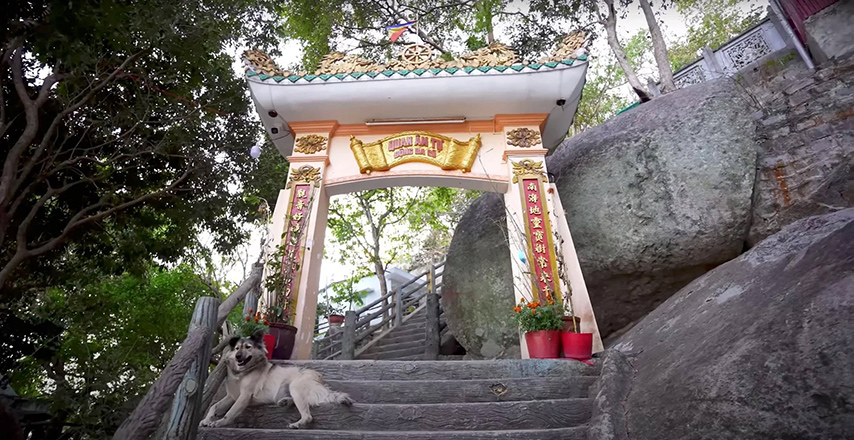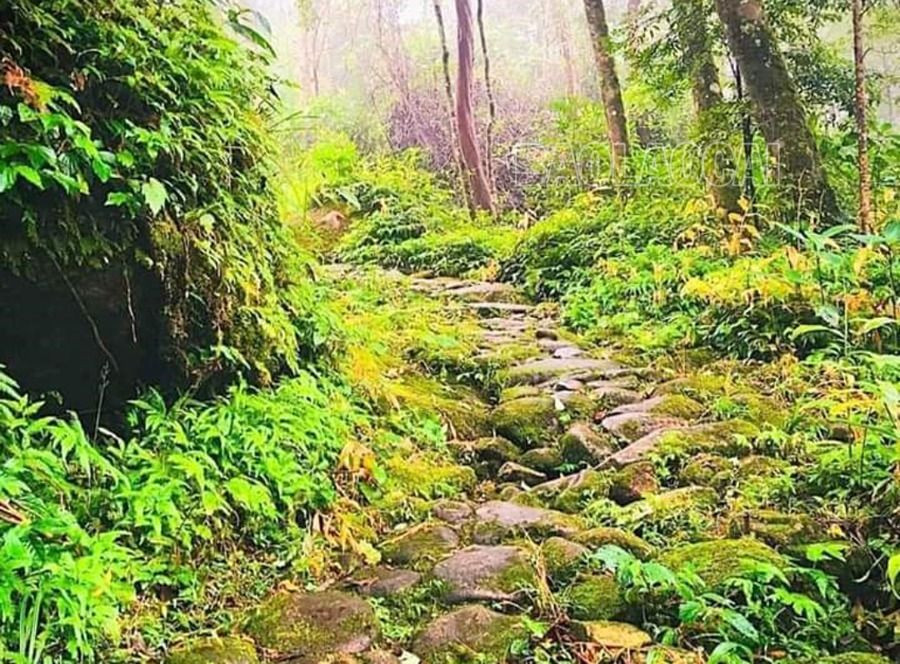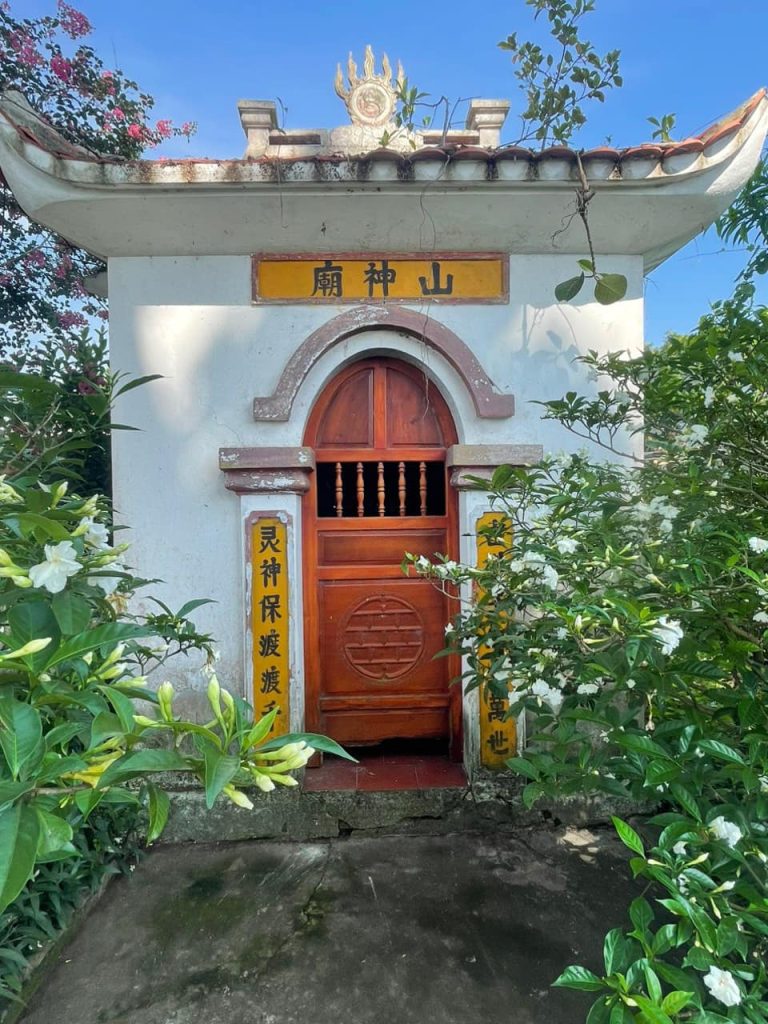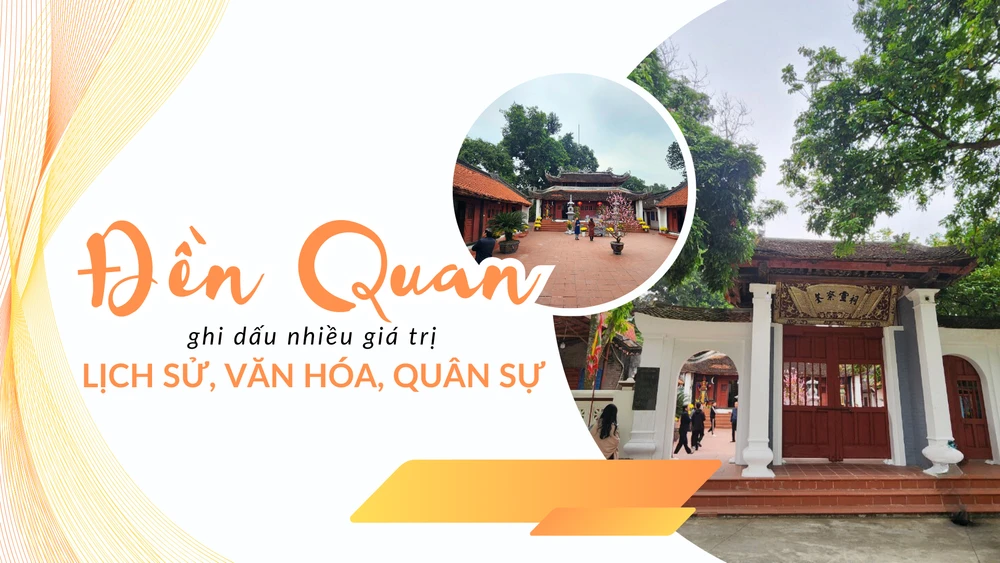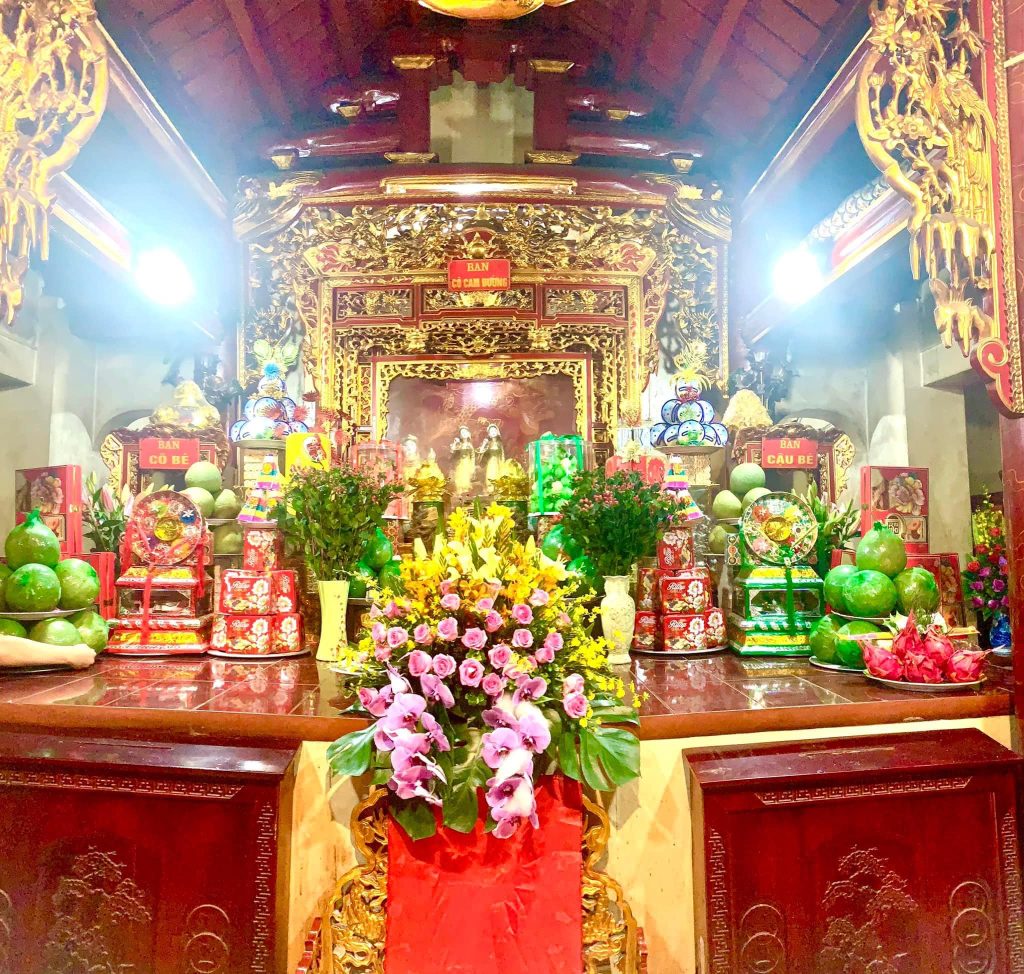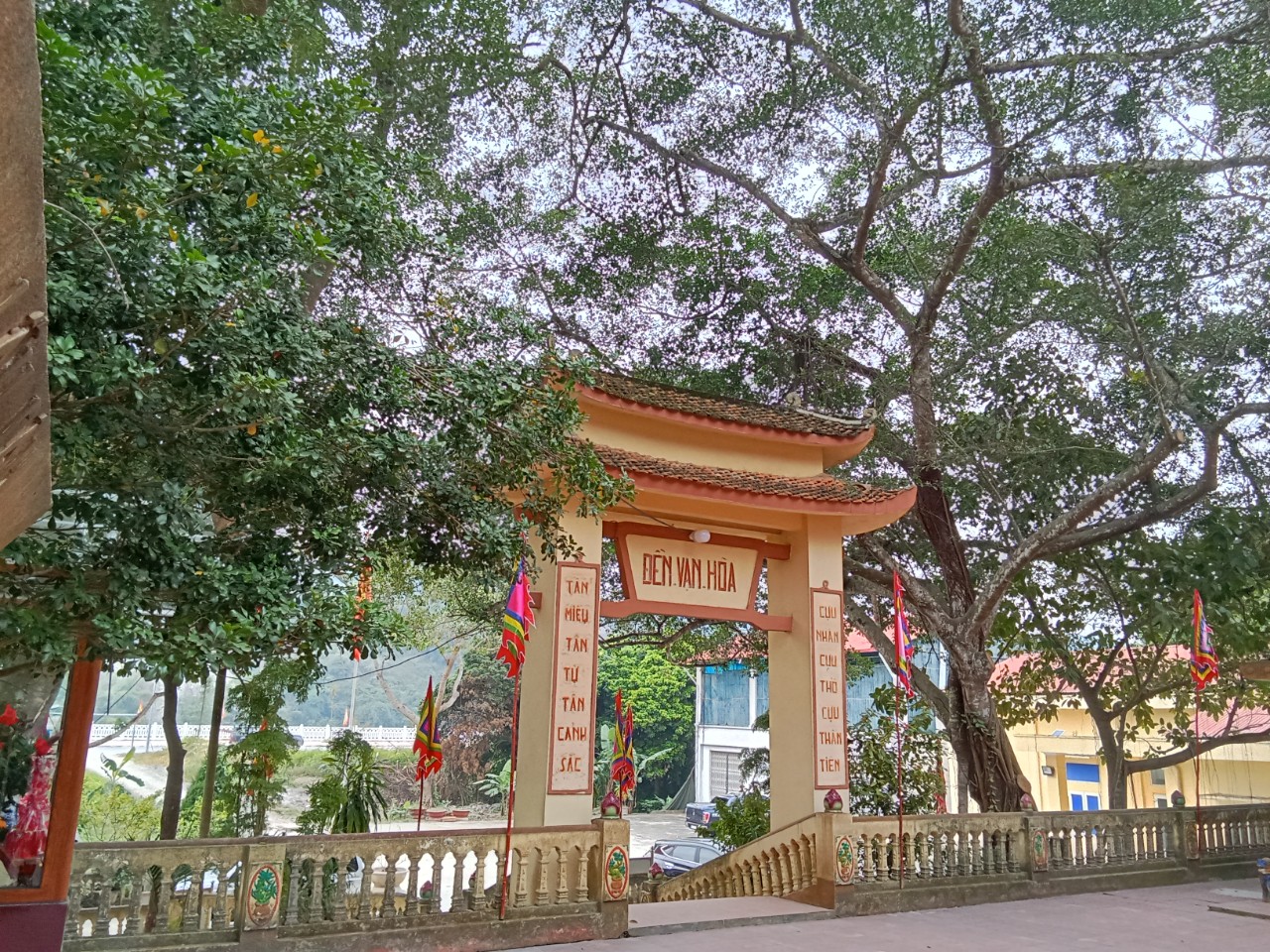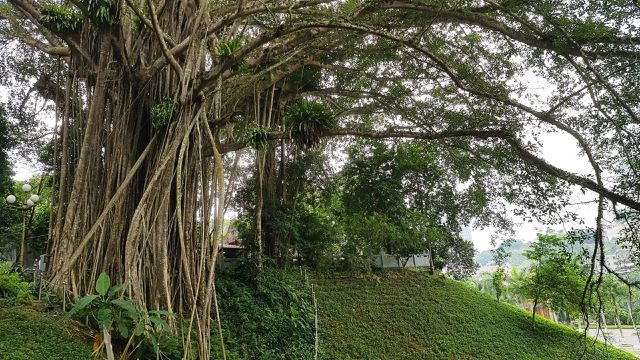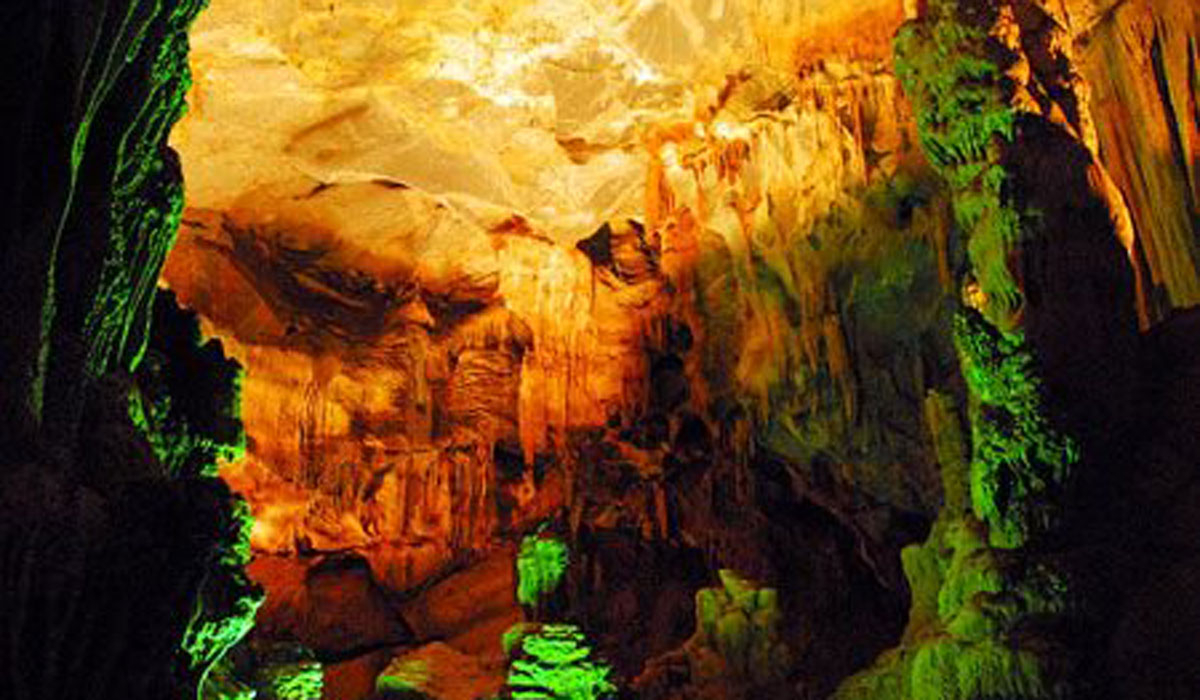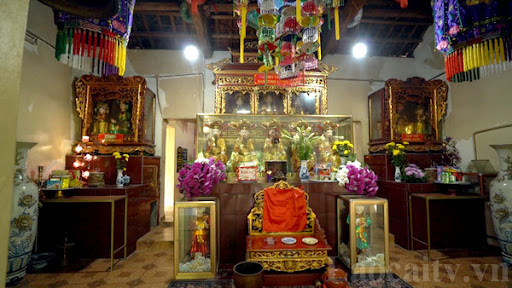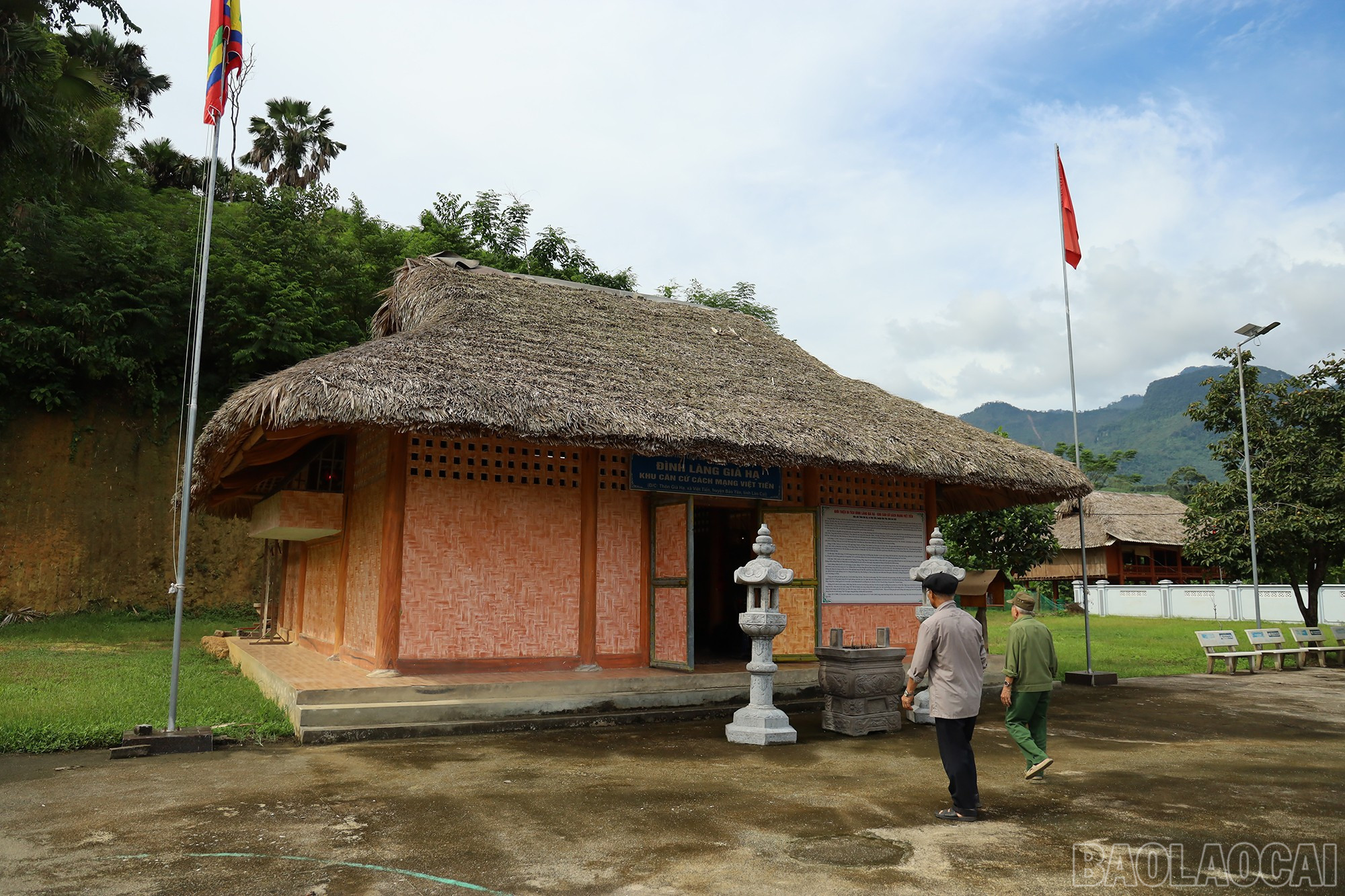Relic point Vietnam
Việt NamCo Ba Temple
Co Ba Temple is located in a charming mountainous location, with its back against the mountain, facing the clear blue Nhu stream, in Lang Den village, Phu Nhuan commune. Today, in Phu Nhuan commune, the story of Ms. Ba is still told. In the past, the land of Phu Nhuan had a princess named Ba who was extremely beautiful and often helped good people. She is very knowledgeable about river affairs, so she often teaches people in the area how to travel on rivers and how to catch seafood in rivers and streams, so she is deeply loved and respected by the people in the area. After the princess died, people built a temple to worship her. Co Ba Temple is an important cultural and spiritual activity site, associated with the religious life of ethnic people in Phu Nhuan commune, and has existed for hundreds of years. Every year, people in Phu Nhuan commune and neighboring localities often come to offer incense, worship, and pray for peace. With historical and cultural values, Co Ba Temple has been recognized by the Provincial People's Committee as a provincial historical and cultural relic to contribute to preserving and promoting cultural heritage values associated with development. tourism; Traditional education, meeting the spiritual needs of the people. On the day of receiving the Ranking Certificate, many spiritual and cultural activities took place associated with the annual festival on the 7th day of the 7th lunar month held at the temple. On this occasion, the People's Committee of Bao Thang district announced details of the temple area planning and the plan to develop the Co Ba temple historical relic area in the near future. Co Ba Temple is an important cultural and spiritual place, associated with the religious life of ethnic people in Phu Nhuan commune. Source: Lao Cai Newspaper
Lao Cai 2610 view
Pavie ancient stone route
The ancient Pavie stone road is more than 100 years old in Nhiu Co San village, Sang Ma Sao commune, Bat Xat district, and has been ranked by Lao Cai province as a provincial-level scenic relic. On December 11, news from the Department of Culture and Sports of Lao Cai said that the Provincial People's Committee had just issued Decision No. 3130/QD-UBND, ranking the ancient stone road Pavie in Nhiu Co San village, Sang Ma Sao commune, Bat Xat district is a provincial-level scenic relic. According to this decision, the Pavie ancient stone road protection area is determined according to the minutes of zoning of relic protection areas in the relic scientific records. The People's Committee of Lao Cai province assigned the Department of Culture and Sports and the People's Committee of Bat Xat district to develop a plan to protect, manage, restore and use the scenic relic of the ancient stone road of Pavie in accordance with regulations. According to many documents and records, in 1920, the Pavie stone road began to be built. Governor Auguste Jean - Marie Pavie is the one who surveyed and directed the construction of this route to transport food and agricultural products between the Northwest provinces of Vietnam. Therefore, the route is called Pavie. After 7 years, the road was completed with a total length of about 100km, crossing Gio Pass in the Nhiu Co San range, extending from Bat Xat district (Lao Cai province) to Lai Chau city (Lai Chau province) today. However, according to indigenous people, before the French built the road, their ancestors conquered Nhiu Co San peak by this path and explored Lai Chau land. The French only continued to borrow the route from the Mong people. for transportation. The ancient Pavie stone route used to serve the transportation of goods, agricultural products, weapons... from Lao Cai to Lai Chau during the French colonial period. Over time, although the path has been covered by grass and trees, the rocky road is still about 3 meters wide and stretches more than 20km through complex terrain. After more than 100 years of being almost forgotten, the ancient stone road has recently been rediscovered and has become one of the must-see journeys to discover the magnificent nature of tourists when coming to Lao Cai. SOURCE: SPEECH AGENCY OF VIETNAM JOURNALISTS ASSOCIATION
Lao Cai 2508 view
Ngoi Bo Temple
Ngoi Bo Temple now belongs to Thong Nhat commune, Lao Cai city, Lao Cai province. Overlooking the river confluence - the intersection of Ngoi Bo stream and the Red River, the temple is a place to worship Tan Vien Son Thanh - one of the Four Immortals of Vietnamese folk beliefs, "the most sacred deity of Vietnam". Southern Heaven". According to the elders, when the people from the lowlands in the village came here and were attached to this land, they built shrines and temples to worship Saint Tan Vien - a Saint who is worshiped throughout the midland and Northern Delta with devout belief in His blessing and protection. That trust is the pedestal and spiritual fulcrum of those far away from home on the path to creating a life in a new land, and at the same time a reminder and maintenance of memories of their homeland. about his ancestors' origins. Ngoi Bo Temple Festival takes place on January 11 every year. Ngoi Bo Temple was ranked as a Provincial historical-cultural relic in 2016./. SOURCE: LAO CAI CITY MONITOR MANAGEMENT BOARD
Lao Cai 2325 view
Quan Temple
Quan Temple is located in Lao Cai ward, Lao Cai city, Lao Cai province, which marks the resistance war against Mongol invaders in the 13th century. Legend has it that the location where the temple was built was where the Tran Dynasty army's prison camp was located during that great national defense war. Over time, with the interweaving of historical memories, legendary thoughts and current aspirations, the temple became a place to worship the Second Supervisor - a legendary figure, a saint. sacred in the temple of Vietnamese people's belief in worshiping Mother Goddesses of the Three Palaces and Four Palaces. According to the adoration texts: “He was originally in heaven The Son of the King of God came to earth No matter who has the order to cry May Mr. Second live a peaceful and prosperous life Talented, upright and intelligent The temple and the temple are filled with heroic spirits The word that the Saint descends and saves grace Many talents, many fortunes, long life in spring". Legend has it that the 11th day of the 11th lunar month is the main day of His Banquet. On this occasion every year, monks, religious officials, admirers of the Three Palaces and Four Palaces beliefs, along with people and tourists from all over, come to the temples, palaces, and shrines to pay their respects to him. incense, praying for His protection and support. Quan Temple was ranked as a Provincial historical and cultural relic in 2015./. SOURCE: LAO CAI CITY MONITOR MANAGEMENT BOARD
Lao Cai 2725 view
Temple of the couple
Located in Binh Minh ward, Lao Cai city, Lao Cai province, Doi Co Temple is a place to worship Cam Duong Doi Co - sacred goddesses in the religious temple of Mother Goddesses of the Three Palaces and Four Palaces. Legend has it that the aunts were "hometown in the ancient land of Dinh Bang/ Line after line trading silk fabric". The Cam Duong area (now part of Lao Cai city) is where the nuns, after their transformation, had their epiphany, "Saving people on land and in the river/ Going back and forth with smooth sailing." To commemorate the merits of their ancestors, people in the area built shrines and temples, where generation after generation they worshiped with incense and smoke. Every year, on the 13th day of the 9th lunar month, the local government and people respectfully hold a banquet to express their gratitude to the Ladies, and at the same time to honor the good qualities of women. Vietnam, affirming the nationality and humanity of the Vietnamese people's belief in worshiping Mother Goddesses of the Three Palaces and Four Palaces, consolidating and further strengthening the cohesion of the community on the foundation of shared beliefs and a sense of direction. source and compatriots. Double Co Cam Duong Temple was ranked as a Provincial historical-cultural relic in 2005./. SOURCE: LAO CAI CITY MONITOR MANAGEMENT BOARD
Lao Cai 2568 view
Van Hoa Temple
Legend has it that more than 700 years ago, when the Northern army invaded our country, the first place to suffer the destruction and harassment of the invaders was Bao Thang street, Thuy Vi district, Hung Hoa province (now Laos ward). Cai, Lao Cai city). At that time, Duke Tiet Hung Dao Dai Vuong Tran Quoc Tuan received orders from the court and soldiers along the waterway (along the Red River) to fight, suppress the Northern invaders, and keep the land peaceful. To commemorate and repay the debt of defeating the invaders, in 1940, the people of Van Hoa commune established a village communal house in Canh Chin village, worshiping Saint Tran and serving as a meeting place for the people. In 1947, also at Canh Chin village communal house, local soldiers chose it as their command post. In 1954, this place was again chosen as the venue for the first military-civilian Party conference of Lao Cai town after Lao Cai was liberated. In 1980, people in the area built a small temple to worship Saint Tran. By 2005, the Lao Cai City People's Committee decided to renovate and upgrade Van Hoa Temple. Next to the temple is a memorial stele house dedicated to the 49 martyrs of Van Hoa who sacrificed their lives for the cause of national liberation. Every year on the full moon day of the first lunar month and the 20th day of the 8th lunar month (the death anniversary of Saint Tran), people in the commune hold solemn ceremonies at Van Hoa temple to commemorate the merits of the past. Van Hoa Temple today is one of the historical and cultural relics located in the relic complex: Thuong Temple, Mau Temple, Cam Temple, Doi Co Temple, Cam Duong Revolutionary Base Area, Tan Bao Pagoda, Cam Lo Pagoda . This place is also an attractive destination for tourists in the spiritual tourism chain of Phu Tho - Yen Bai - Lao Cai. Every year, it welcomes hundreds of visitors and worshippers, contributing significantly to the development of the locality. With those great historical and cultural values, the ranking of Van Hoa Temple as a provincial-level historical and cultural relic contributes to preserving and promoting cultural heritage values associated with tourism development and restoration. serve the local political tasks well, ensuring security and politics; Traditional education, meeting the spiritual needs of the people. Source "Lao Cai Electronic Newspaper"
Lao Cai 2572 view
Vietnamese heritage banyan tree
Thuong temple banyan tree belongs to the multi-hairy variety. At the time of recognition, the tree was classified as a heritage tree with the largest trunk circumference in Vietnam, with a circumference of 44m, more than 36m high, and an age of over 300 years. Up to now, the tree has developed many additional roots and thousands of baby roots surrounding it. It is very difficult to distinguish which is the main stem and which are the secondary roots, because over time, the secondary roots have developed and become tightly attached to each other into giant root clusters no different from the main stem. Along with the regime of caring for heritage trees according to State regulations, the ancient banyan tree at Thuong Temple is always protected by the people. Every year the tree produces many roots, but no one breaks the branches, cuts the roots, or climbs. The tree has many mistletoe, many orchids clinging tightly to high branches, and large roots add to the ancient and natural beauty. When recognized as a "Vietnamese Heritage Tree", the banyan tree at Thuong Temple was the first ancient tree in the province to be recognized by the Vietnam Association for Nature and Environment Protection as a Vietnamese Heritage Tree. The tree stands tall and proud right on the banks of Nam Thi River, next to Thuong Temple - the place to worship the National Duke Tiet Hung Dao Vuong - Tran Quoc Tuan, who has made great contributions to the cause of protecting the land, mountains and rivers. water, becoming the pride of the people in the border land - Lao Cai. Source "Lao Cai Electronic Newspaper"
Lao Cai 2888 view
Tien Canh Cave
According to a survey by the Research and Collection Department (Lao Cai Provincial Museum), Tien Canh cave has a total length of 158m, the road is still quite difficult to travel because it has not been invested or renovated. The cave has 3 areas that converge with distinct, unrelated features of stalactites and natural landscapes, creating an attractive spot for tourists who like adventure and discovery tourism. The entrance of Tien Canh cave is in the form of a natural sinkhole covered by a wide, sturdy stone roof. The cave's roof has many shapes that are naturally created, such as beetles, dinosaur teeth, and dense sharp sword tips in the shape of comb teeth. In this area, the stalactites cluster together from the dome downwards like long hair. The left side of the stalactite wall is very bright, hanging down like a curtain, where tree roots are thickly intertwined with the stalactite layer. smooth like a vivid lacquer painting. Overall, the cave's roof resembles the jaws of a dragon opening wide, yawning after centuries of sleeping peacefully in the middle of majestic nature. Stepping through the cave entrance, you will arrive at Son Trang cave with a brown cave ring, gentle cave floor and stone patterns like terraced fields of miniature high mountains. This is the area with the highest concentration of stalactites, forming majestic mountains and forests. Vy. Sitting on the largest rock naturally placed in the middle of the cave, watching the panoramic view of stalactites like magnificent European castles; Many stalactites look like giant crystals, emitting magical light whenever a ray of light shines on them. This is the first stop to see the most magnificent and beautiful things of Son Trang cave. Standing at different angles, each person is immersed in their own emotions, but there is one thing they have in common that cannot be denied: seeing the beauty of this landscape. The next area is narrow, a small path with many stalactites growing from the ground, like coral reefs, making people feel like they are under the vast ocean, so the locals named it Thuy. Bow. On the coral reef, the stalactites are skillfully shaped into the shape of a statue of a mother holding her child in front of her chest. At the bottom, there are 3 stone pillars connecting to the top of the cave like a gate pillar before entering the aquarium, the natural gate opens to the whole world. a magnificent and unique natural building. Going all the way to the end of the Aquarium, you will reach the bottom of the cave with a wide, flat floor, where many stalactites gather from the ceiling to the bottom of the cave. The cave wall is made of a layer of solid rock covered with a layer of dark brown soil powder. It is that layer of soil that prevents the cave from resonating with sound. In this area, there are stalactites rising from the cave floor to form a tea table with 3 stalactites rising around it like people are enjoying afternoon tea. It all creates a sparkling picture, especially when light shines on it... With values of history, aesthetics, economic tourism, science and defense and security, in October 2019, Tien Canh cave landscape was ranked by Lao Cai Provincial People's Committee as a famous and beautiful relic. provincial level scene. Tomorrow, when investment is concerned, Tien Canh Cave can become an attractive tourist destination, bearing the characteristics of Xuan Thuong in particular and Bao Yen in general. Thereby effectively promoting the values of nature, culture, and people, helping people in Xuan Thuong commune develop economically and increase income. SOURCE: Lao Cai Electronic Newspaper
Lao Cai 2447 view
Lang Luc Temple
The historical and cultural relic Lang Luc temple is located in Luc village, Bao Ha commune (Bao Yen district). The temple was built to pay respect to the three generals of mandarin Hoang Bay. They were instrumental in expelling the Northern invaders, establishing hamlets and villages, teaching the people to develop the economy, and providing military food for General Nguyen Hoang Bay to fight the enemy at the end of the Le Dynasty (17th century). History books also record that at that time, the entire Quy Hoa region of Thuy Vi and Van Ban continents (present-day Bao Ha area) were always invaded, looted, and killed by the Northern invaders. Realizing the increasingly urgent situation, the Le Dynasty, Canh Hung reign (1740 - 1786) sent the seventh general with the surname Nguyen to defend Quy Hoa. The famous general Nguyen led his army to attack along the Red River, liberate Khau Ban and build a strong Bao Ha base, waiting for the opportunity to expel the invaders. Among the soldiers of the famous general Nguyen, there were three brothers named Hoang who repeatedly contributed to expelling the invaders. They asked the general for orders to find new lands to bring people to reclaim, build villages, and practice. soldiers and monks, produce and provide food for the insurgents. The three Hoang brothers chose a location in Luc village and then recruited Tay and Dao ethnic people from neighboring areas to come here to establish a village. After a while, he and the villagers explored four large fields, named Coc Tram, Tang Luong, Na Ke, and Coc Tun. The 3 men taught people how to cultivate wet rice, grow corn, produce food for daily life and support General Nguyen Hoang Bay's army to become stronger. The great contributions of the three Hoang brothers have received respect and trust from ethnic people here. After his death, he was honored by the people as the village's tutelary god, and a temple was established in the middle of Luc village. Looking from the outside, the solemn temple consists of 3 worship spaces: the Palace to worship the Council; Palace worshiping General Hoang Bay; The temple worships the Three Holy Mother Goddesses. Every detail in the temple is delicately carved, creating a majestic look. SOURCE: Lao Cai Electronic Newspaper
Lao Cai 2614 view
Gia Ha village communal house - Viet Tien
The Gia Ha communal house project was restored according to the original village communal house model and based on the descriptions of the elderly and witnesses currently living in the commune. The total area of the relic site is nearly 300 m2, the communal house construction area is nearly 100 m2. Total investment is over 500 million VND, of which the State supports 410 million VND and the People contribute over 100 million VND including cash and labor days. According to historical documents, in November 1947, the Provincial Party Committee and the Administrative Resistance Committee of Lao Cai province advocated with the people to evacuate to Luc Yen, Yen Bai province, in Hung Viet commune (Viet Tien commune, district Bao Yen today). At Gia Ha village communal house, the Lao Cai Provincial Party Committee held a conference of Party cadres across the province to discuss the direction of the resistance war, building forces in the base area, strengthening rural party cells and discussing opening a border campaign. world, Le Hong Phong campaign moved towards liberating Lao Cai. Not only a revolutionary base, the ancient village communal house is also a meeting place and cultural and artistic activities of the people in the region. Therefore, the restoration and investment in rebuilding Gia Ha communal house is the desire of the Party Committee, authorities and local people. SOURCE: LAO CAI RADIO - TELEVISION
Lao Cai 2608 view
